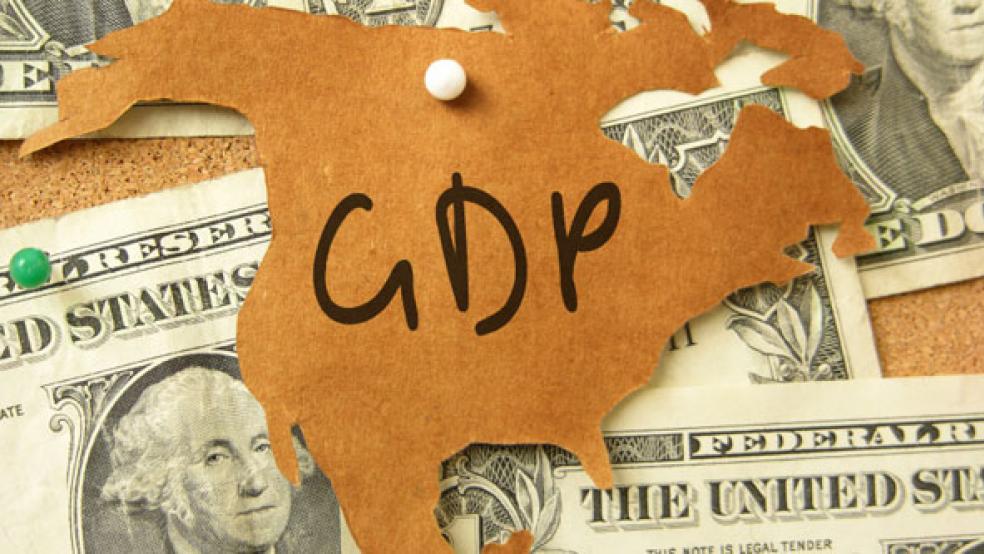The U.S. government slashed its estimate for fourth-quarter growth as consumer spending and exports were less robust than initially thought, leaving the economy on a more sustainable path of modest expansion.
Gross domestic product expanded at a 2.4 percent annual rate, the Commerce Department said on Friday. That was down sharply from the 3.2 percent pace reported last month and the 4.1 percent logged in the third quarter. Economists polled by Reuters had expected growth would be cut to a 2.5 percent pace.
Related: Yellen Says Fed Needs 'Firmer Handle' on Soft Data
It is not unusual for the government to make sharp revisions to GDP numbers, as it does not have complete data when it makes its initial estimates. In fact, the latest figures will be subject to revisions next month as more information is received. The revision left GDP just above the economy's potential growth trend, which analysts put somewhere between a 2 percent and 2.3 percent pace.
Consumer spending accounted for a large chunk of the revision after retail sales in November and December came in weaker than assumed. Consumer spending was cut to a 2.6 percent rate, still the fastest pace since the first quarter of 2012. It had previously been reported to have grown at a 3.3 percent pace.
Consumer spending, which accounts for more than two-thirds of U.S. economic activity, contributed 1.73 percentage points to GDP growth, down from the previously reported 2.26 percentage points. As a result, final domestic demand was lowered two-tenths of a percentage point to a 1.2 percent rate.
Related: Extreme Cold Weather Could Chill the Economy
The loss of momentum appears to have spilled over into in the first quarter of 2014, with an unusually cold winter weighing on retail sales, home building and sales, hiring and industrial production.
Soft Patch Temporary
The Federal Reserve, which has been cutting back on the amount of money it injects into the economy through monthly bond purchases, views the recent soft patch as temporary.
Fed Chair Janet Yellen told lawmakers on Thursday that the cold weather had played a role in the weakening data. She said, however, that it would take a "significant change" to the economy's prospects for the Fed to suspend its plans to wind down its bond buying. Despite the first quarter's weak start, economists remain optimistic that growth this year will be the strongest since the recession ended almost five years ago. For all of 2013, the economy grew 1.9 percent.
Trade also weighed on fourth-quarter revisions, after a fall in exports in December resulted in a bigger trade deficit in the fourth quarter than the government had initially assumed. Trade's contribution to growth was lowered to 0.99 percentage point from 1.33 percentage points. It was still the largest contribution to GDP growth since late 2010.
Inventories, previously reported to have risen by $127.2 billion in the fourth quarter, were revised down to $117.4 billion. The rise in the stocks of unsold goods was still the largest since early 1998 and followed a gain of $115.7 billion in the third quarter of 2013.
The contribution to growth from inventories, which the government put at 0.42 percentage point a month ago, was revised down to only 0.14 percentage point. Excluding inventories, the economy grew at a 2.3 percent rate, revised down from a 2.5 percent pace. Government spending was also revised down, but the impact was offset by upward revisions to investment in residential construction, nonresidential structures and business spending on equipment.




